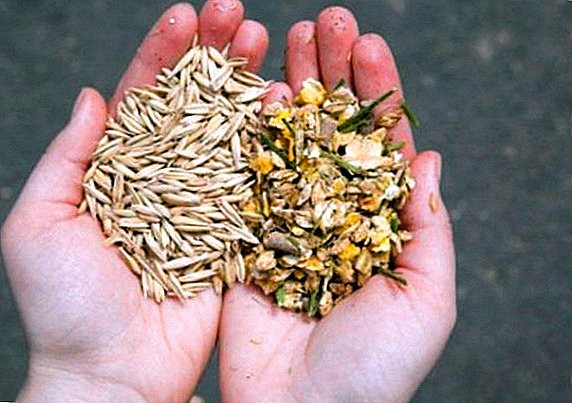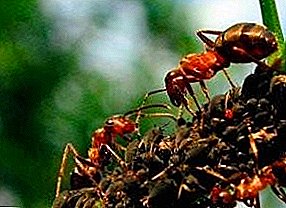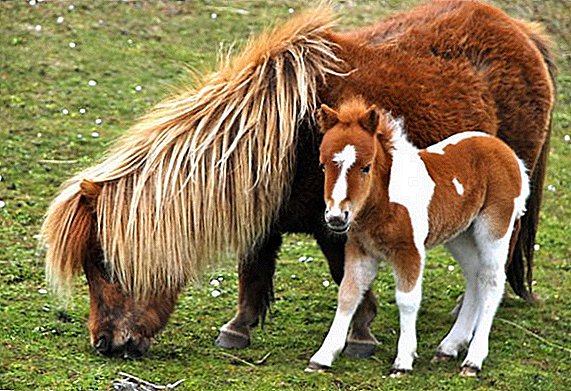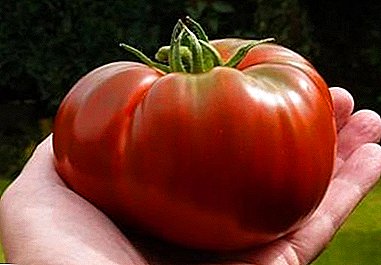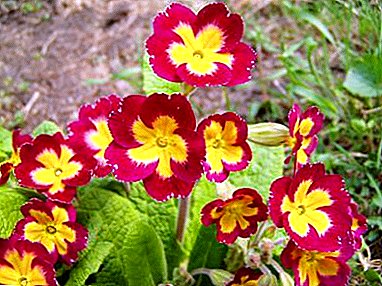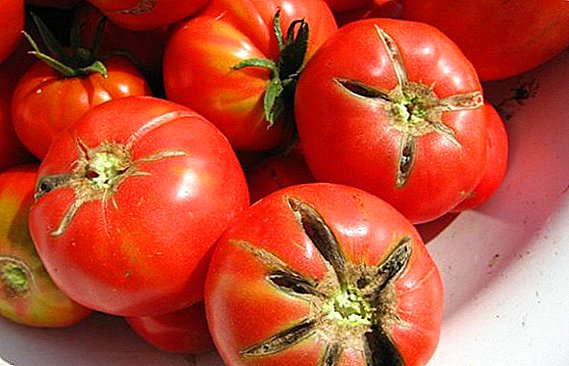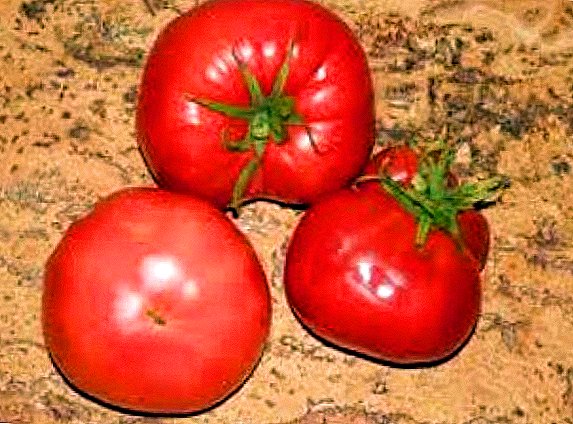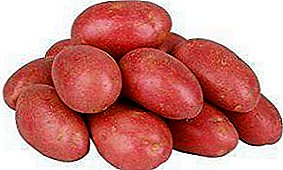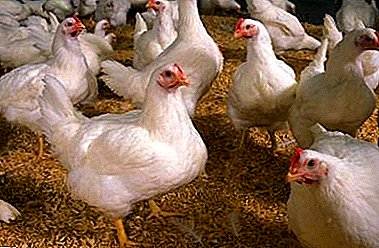
Not only large poultry farms, but also amateur poultry breeders at private farms are engaged in growing broiler breeds. Growing broiler chickens at home has a number of distinctive features and nuances that must be respected.
Consider the main aspects of this industry in this article. Also watch the helpful video on this topic.
Breeding characteristics
Breeding broilers from scratch implies, in the first place, the formation of the parent flock. A parent flock should consist of several birds of different sexes per tribe. The ratio of females and males is eleven to one, i.e. 11 chickens - 1 cock. A greater number of males adversely affects the quality of egg fertilization.
When selecting eggs for incubation should be guided by the following rules:
- eggs should be selected medium size, regular shape and uniform color;
- collecting eggs from nests should be done several times a day (3-4) and not allow them to be supercooling or heating;
- The maximum shelf life of eggs after removal from the nests and before laying in the incubator should not exceed 3 days.
IMPORTANT: Too large eggs should not be selected because they have a thin shell. On such a shell, as a rule, there are always microcracks. Through them, an infection can get into the embryo that affects the health of the chicken. In the worst case, the egg will be completely unsuitable.
Selection of individuals for personal production
In order to acquire broiler chickens, novice poultry farmers do not have to breed a herd, but you can buy eggs from poultry farms. To alleviate the task of chickens and to avoid many of the difficulties associated with this case, it may be a decision to purchase already raised livestock.
At what age is it best to buy a bird?
 This question always arises in novice farmers who decide to acquire broilers. Not knowing all the nuances and buying daily birds at very low prices, they often fall into a mess.
This question always arises in novice farmers who decide to acquire broilers. Not knowing all the nuances and buying daily birds at very low prices, they often fall into a mess.
This is due to the fact that daily broilers are very difficult to grow without special conditions. The main part of the death of a bird falls on the first week of their life.. That is why it is best to buy them at the age of ten or more.
Rooster or chicken?
As a rule, the floor for raising meat broilers does not play a special role, but if desired, it can be recognized even at the age of day. It is determined by the wings: the wing of the rooster in the unfolded form has feathers of the same length, and the hens - different.
You need to choose active and mobile chicks.. Healthy individuals do not have blurred eyes, good fluff and soft, not swollen belly. Healthy chickens respond well to sounds.
When to purchase?
Depending on the conditions of broilers, there are 2 types of their cultivation:
- Extensive. In this case, the batch of chickens is purchased (output) in the spring and kept until mid-summer. In the middle of summer, when a bird has gained a mass of commodities, slaughter is carried out. The method is seasonal.
- Intensive. Lots are purchased every 3 months, all year round.
How to grow a broiler breed?
There are 2 types of broiler content:
- in the cells;
- on the litter.
In cages

In one standard cage for chickens you can place 20 feathered pets, and there is no need to expand this area as they grow. In order to save space, very often cells have tiers. Main characteristics for cell content:
- the temperature of the air in the cages in the first weeks of life of the chicks must be maintained at 35 degrees. As the chicks grow, it can be reduced to 20 degrees;
- the air humidity at the initial stages must be maintained at about 65%, it is allowed to increase to 70% in the future;
- bedding is not required. It is only necessary to clean and disinfect bird houses regularly;
- lighting for day-old chicks should be around the clock;
- ventilation must also be of high quality.
On the litter

- Laying on the floor must meet the following requirements: to be soft, loose and well absorb moisture. Matters and the floor itself. It is filled with a layer of quicklime at the rate of 1 kg per 1 square meter. Further the laying itself is put. The best option is considered to be dry, well-dried sawdust.
- The temperature in the room may be slightly lower than in the cells.
- Requirements for humidity, daylight and ventilation are the same as in the first version shown.
Feeding
Food for broilers at home should be regular and balanced. From it directly depends on the increase in body mass and taste of meat. Consider feeding broiler chickens by age:
- From the 1st to the 3rd day of life, the diet of chicks consists of eggs and cottage cheese.
- From the 3rd day greens are added. In the summer, it can be shredded grass, tops or nettles. In winter, green fodder is replaced by grass meal.
Grass meal should be added in the calculation of no more than 3-5 g per 1 head, because the fiber is slowly absorbed by young organisms and can cause diarrhea. The first 7 days of chickens should be fed 8 times a day.
- From the 5th day of life, minerals are introduced. They contain bone and fish meal, crushed chalk. Eggs are already given along with the shell.
- From 2 weeks of age, cereals appear in the diet: wheat, corn, wheat. During this period, cereals make up 60% of the diet. Meals are 6 times a day.
- At the age of 3 weeks, boiled potatoes are added and a wet mash is made, which then alternates with dry. The number of feedings is reduced to 4 times, and when broilers reach a month of age - up to 2.
- Starting from the 2nd month onwards, the amount of herbal feed becomes more protein.
TIP: It is recommended to feed broilers up to 14 days of age only with boiled water. For a beneficial effect on digestion, it is sometimes possible to add some potassium permanganate or chamomile decoction.
Feed
 Very often, to accelerate the growth of the birds it is fed with animal feed. As a rule, use 3-step systems, which include food, designed for all periods of life - from birth to slaughter.
Very often, to accelerate the growth of the birds it is fed with animal feed. As a rule, use 3-step systems, which include food, designed for all periods of life - from birth to slaughter.
Compound feed is a source of vitamins, minerals, proteins and fats, which are necessary for strengthening immunity and rapid growth. It is especially advisable to use for fattening feed on large poultry farms. In small farmsteads, sometimes such feed is not beneficial in terms of payback. In such cases, feed is fed only the first 4 weeks.
Watch the video about feed for growing healthy broilers:
Frequent host errors
Often, when growing broilers, inexperienced owners make mistakes that are fraught with consequences in the form of disease or even loss of livestock. To avoid such trouble know and adhere to the following rules:
- The diet of the bird should be balanced, and feeding - regular.
- When the cell content of the cells should be promptly cleaned from litter and disinfected. If the content is litter, it should be replaced regularly. This aspect will save the bird from infectious diseases that can occur in unsanitary conditions.
- Drinking bowls should be installed not on the litter, but in special places. Otherwise, the layer of bedding will be constantly wet, thereby creating a favorable environment for the development of mold and mildew, and, as a result, the disease of chickens.
- In order to avoid death and disease, it is recommended to vaccinate the livestock, especially if there have already been cases of disease.
- Non-compliance with the above recommendations is a common mistake made by novice poultry farmers.
After reading the tips and recommendations on the content of chickens given in this article, you can successfully grow more than one batch of meat broilers. Moreover, if there is room, it is possible to organize year-round production, and not just seasonal. The main thing is desire and work.


